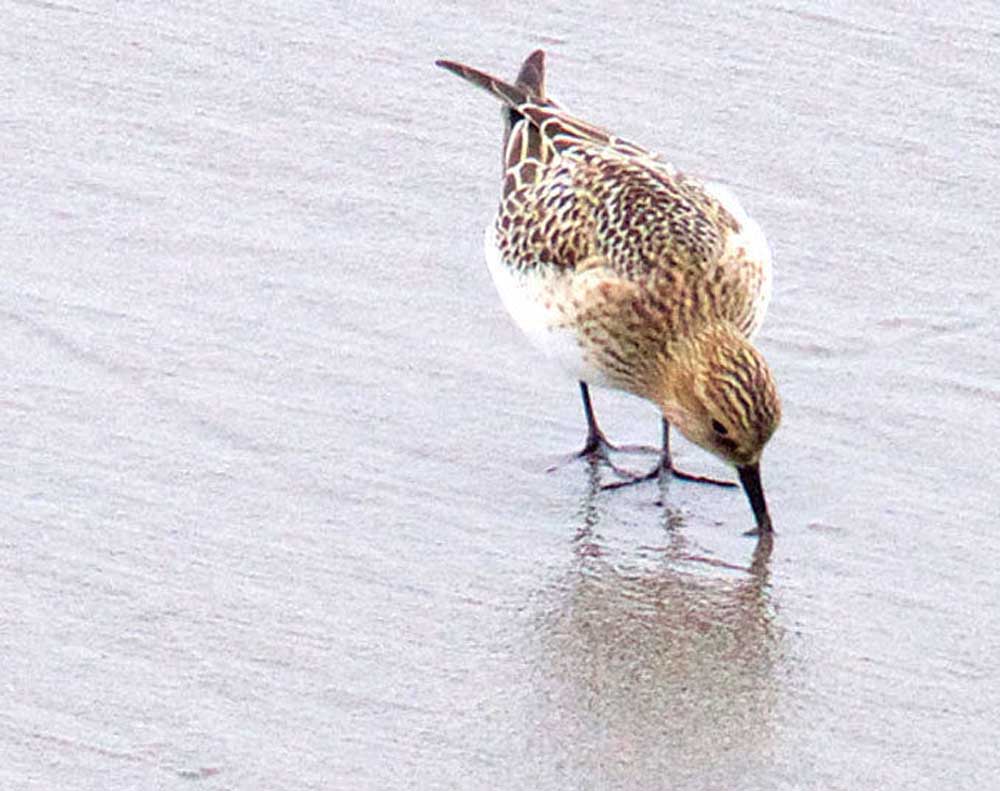Birdwatching Baird’s sandpiper: A refuge and Peninsula first-timer
Published 9:11 am Friday, August 18, 2017

- Baird's sandpipers have extra long wings that extend beyond the tail. This bird is probing for insects with its short black bill.
PACIFIC COUNTY — For the first time ever, Baird’s sandpipers have been reported on the Willapa National Wildlife Refuge and elsewhere on the Long Beach Peninsula. eBird, the bird-sighting database housed at Cornell University’s Ornithological Lab, reveals that a few of these sandpipers were sighted here between Aug. 2 and Aug. 7. More specifically, Baird’s have been seen at Cape D, Benson Beach, the Seaview approach and at the refuge’s Leadbetter Point.
Trending
The Baird’s sandpiper is an uncommon migrant in Pacific County and as such is designated as a species that is usually seen annually, but is hard to find. Its breeding grounds are located in the tundra of the high Arctic, and the staging grounds for their southern migration to their wintering area in South America are in southern Canada and the northern U.S. In total, some of these sandpipers travel over 9,000 miles round trip with Tierra del Fuego being the furthest destination southward.
In all plumages, Baird’s sandpipers have relatively short legs and extra long wings that extend beyond the tail tip, which is double-notched, giving it a tapered-looking appearance. It has a short all-black bill and black legs, which are diagnostic of the species compared to similar shorebirds. Juveniles are the most likely Baird’s to be seen at this time of year in our area as opposed to adult birds. They have a neat scaly pattern on the upper-side and a buffy breast band. Overall, they appear to be brownish in color.
Unlike many other similar species of shorebirds, the Baird’s sandpiper tends to forage on the drier upper areas of beaches, and often feeds in grassy areas such as sand dunes. It is rarely seen on mudflats or in water. In addition, it is often seen with the buff-breasted sandpiper (See the Observer, Aug. 9, 2017). Generally speaking, Baird’s are usually seen in small flocks. A flock of four was the largest seen at one time so far this year.
Trending
Now that it has been observed in our area, it will be added to the Willapa National Wildlife Refuge’s Checklist of Birds. Shorebird migration continues to show increases not only in the number of individuals seen, but also in the number of species observed. This seems to be a good year for rarities. Have you been out on the beach to have a look yet?









